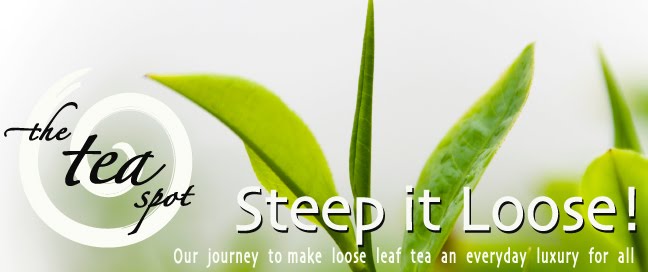
In my 9-month tenure as the GM of the TeaSpot’s downtown retail location in Boulder, I have come across quite a few customers who, befuddled by the size and content of our tea list whilst trying to make a selection, look at me plaintively and say “I don’t like green tea, but what else can you recommend?”
One of the most important things to know about tea is that the water temperature that you use to steep your tea with is extremely important. Most customers that claim to have a mild or severe distaste for green tea had no idea that if boiling water is used to steep it, chances are it will turn out to be bitter and taste horrible. Considering most folks simply boil water then pour it over tea if they make it at home (which is what I do, albeit much more carefully now), it is not surprising that most people are making it incorrectly, and therefore not enjoying it. Using water that is cooler allows the tea to reach is perfect, peak flavor, as well as release the maximum amount of essential oils, vitamisn, and antioxidants. Using boiling water will scorch your tea; the taste will be bitter, and you will literally burn out those health benefits, which is probably why you’re attempting to drink the stuff in the first place, right?
Black and herbal teas: Boiling water (212˚F)
Green and white teas: 175˚
Mates and oolongs: 195˚
Since we don’t all have thermometers ready at hand to measure the temperature of our water (and if you do, well then use it), there are a few strategies one can use to bring water to an ideal temperature for brewing green tea. If you use an electric kettle like I do, the best thing to do is to plop a few ice cubes into the kettle after it has switched off. I have found that for one 16 ounce mug, one regular sized ice cube will do the trick perfectly; for mate or oolong just let the water sit for a few minutes before you pour it. For boiling water on the stove, simply cut the heat before the water shows signs of “dragon eyes,” when bubbles start to form and rise to the surface of the water. For mate or oolong tea, remove the water from the heat right after the water looks like a string of pearls; water bubbles following one another in a string to the surface of the water.
Making the perfect cup of a tea is a culinary challenge and delight. It’s a bit like yoga, sex, or running on the treadmill…it might not be perfect the first time, but the more you practice, the better it gets. Well, maybe not the treadmill, but you see what I’m saying: get in the kitchen and practice making that tea!
.jpg)




